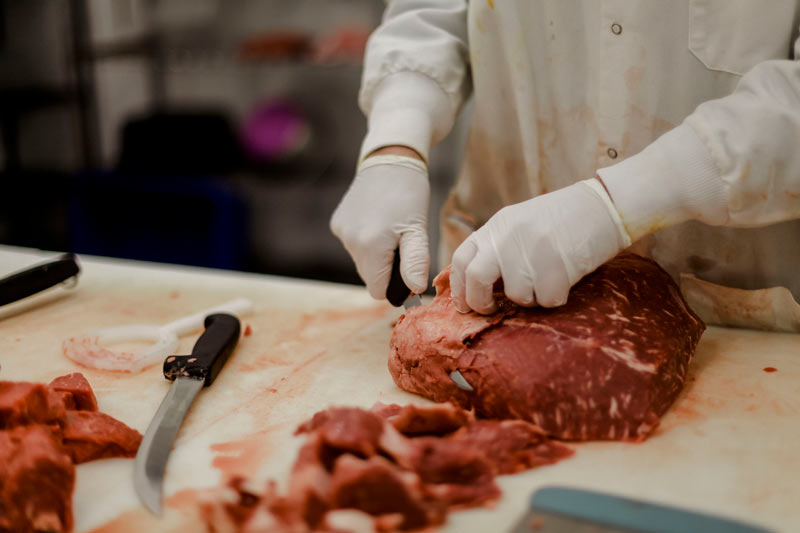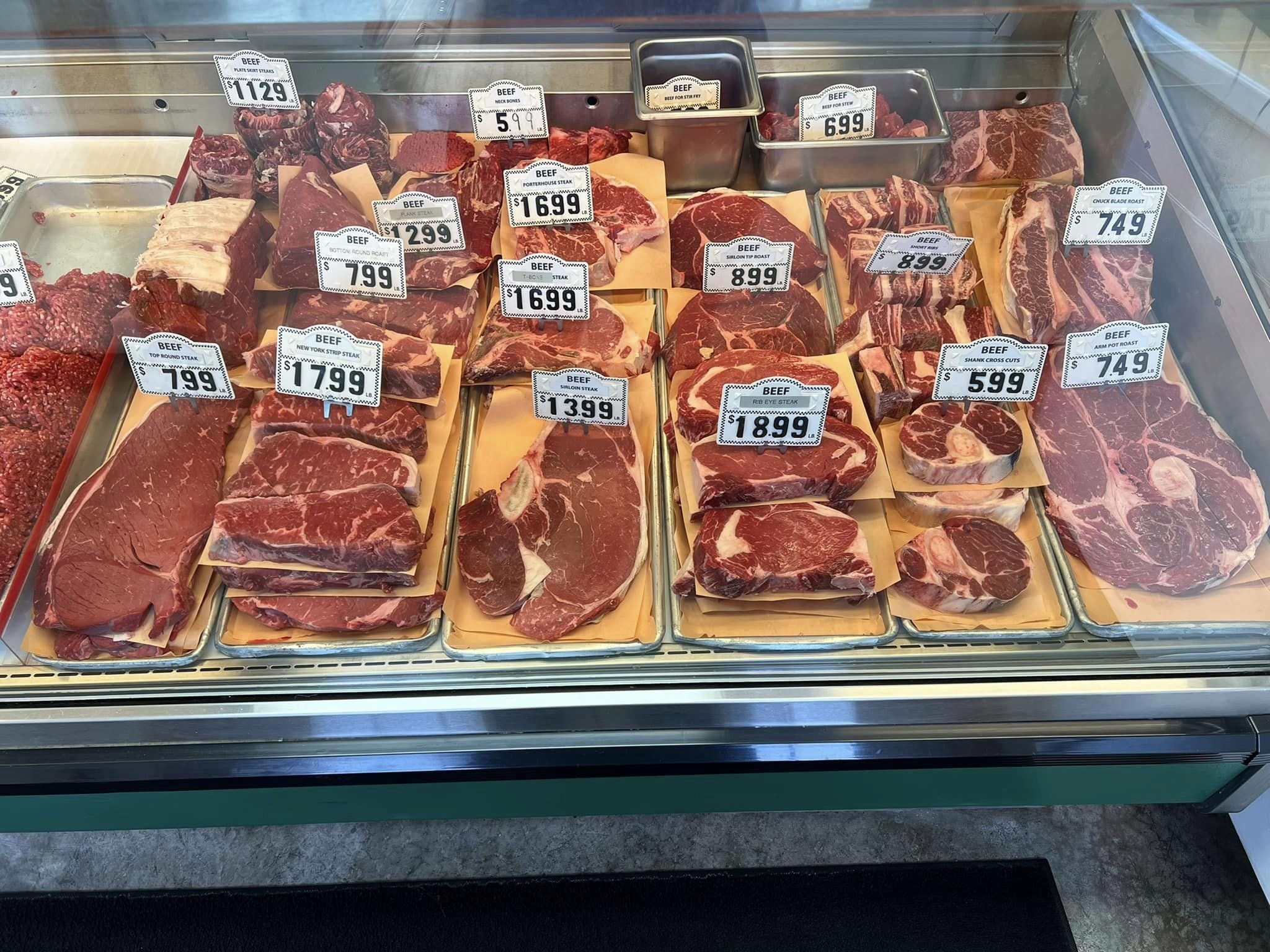Just How to Pick the Perfect Cut of Meat From a Trusted Meat Market
Picking the optimal cut of meat from a trusted meat market calls for a thoughtful method that stabilizes quality, culinary function, and budget. Comprehending the various kinds of meat and their respective cuts is crucial, as is engaging with your butcher to obtain insights right into sourcing and preparation. Observing qualities such as color, structure, and marbling can even more guide your choice. As you take into consideration these factors, it ends up being clear that the subtleties of your choice might dramatically influence the result of your dish, prompting a deeper expedition of the standards that really issue.
Recognizing Meat Cuts


For example, the tenderloin is treasured for its buttery appearance and very little connective cells, making it suitable for fast food preparation techniques such as grilling or pan-searing. In comparison, harder cuts like the brisket or shank gain from slow-moving cooking techniques to break down collagen, generating abundant and delicious results.
In addition, the fat web content of a cut plays an essential function in taste profile and dampness retention during food preparation. Cuts with greater fat content, such as ribeye, use a more robust taste, while leaner options, like sirloin, may call for careful preparation to stay clear of dryness (bagley meat market edwardsville il). Recognizing these subtleties enables for educated choices that raise cooking creations, making sure that each dish showcases the most effective high qualities of the picked meat
Factors to Think About
When picking the perfect cut of meat, several important factors come into play that can substantially influence the final meal. Take into consideration the kind of meat you want-- beef, pork, lamb, or poultry-- as each offers special tastes and appearances. The details cut within that category is equally important; as an example, ribeye provides rich marbling, while tenderloin supplies a lean, buttery structure.
One more aspect is the food preparation approach you prepare to utilize. Cuts appropriate for barbecuing, such as T-bones or sirloins, vary from those much better fit for sluggish cooking, like chuck roasts or shanks. Furthermore, freshness is critical; always choose meat with a vibrant color and company appearance, signifying high quality and appropriate handling.
Additionally, think about the source of the meat. A trusted meat market frequently offers locally sourced, hormone-free, and grass-fed alternatives, which can boost taste and nutritional value. Lastly, your spending plan will certainly assist your choice. Costs cuts may offer outstanding taste, yet there are likewise cost-efficient choices that, when prepared appropriately, can generate delicious outcomes. Stabilizing these elements will certainly assist you choose the excellent cut for your cooking needs.
Inquiries to Ask Your Butcher
A butcher's expertise can be important when choosing the optimal cut of meat for your culinary ventures. Beginning by making inquiries regarding the source of the meat.
Next, ask regarding the different cuts readily available for the sort of meat you choose. A knowledgeable butcher will certainly describe the nuances of each cut, aiding you select one that matches your food preparation Related Site technique and wanted result. Do not be reluctant to make inquiries regarding the ideal food preparation strategies for a certain cut; butchers frequently have ideas that can enhance your dish.
It's likewise prudent to ask about the meat's freshness. A good butcher will be eager to share their proficiency and suggest cuts that will delight your taste buds. Engaging your butcher with these questions can dramatically boost your meat choice experience.
Acknowledging Quality Meat

Texture is one more important variable; top quality meat should feel firm and somewhat resilient to the touch. Prevent any kind of cuts that really feel slimed or exceedingly completely dry, as these can indicate putridity or incorrect storage Home Page space. Furthermore, scent plays an essential duty; fresh meat needs to have a tidy, neutral aroma, while any kind of repulsive or sour smells are warnings.
Finally, think about the source. Investing in from a trusted meat market, where the meat's origin is known, can guarantee better requirements. By focusing on these indicators-- shade, marbling, appearance, odor, and source-- you can confidently select cuts that will certainly raise your cooking and dining experience.
Cooking Approaches for Each Cut
Selecting the appropriate food preparation technique is critical for making best use of the taste and tenderness of each cut of meat. Different cuts have special official website qualities that dictate one of the most suitable food preparation methods.
For tender cuts, such as filet mignon or ribeye, dry warmth methods like barbecuing, broiling, or pan-searing are excellent. These techniques improve the all-natural tastes while making sure a juicy, delicious texture. On the other hand, harder cuts, such as chuck or brisket, take advantage of damp warm approaches, including braising or sluggish food preparation. These strategies help break down connective cells, causing a tender, flavorful meal.
Pork chops and chicken breasts are flexible and can be cooked making use of both dry and moist methods. While barbecuing or roasting can generate scrumptious results, poaching or sautéing can preserve wetness and inflammation. For lamb, approaches like roasting or braising are suggested, as they enhance the meat's durable flavor.

Verdict
Finally, picking the excellent cut of meat from a trusted meat market necessitates a comprehensive understanding of meat cuts and factor to consider of different aspects, including resource, high quality, and food preparation techniques. Engaging with the butcher with targeted questions can yield useful understandings and referrals tailored to certain culinary requirements. Prioritizing both high quality and spending plan will boost the overall gastronomic experience, making sure that the chosen cut satisfies assumptions in both flavor and prep work.